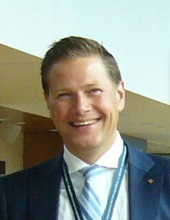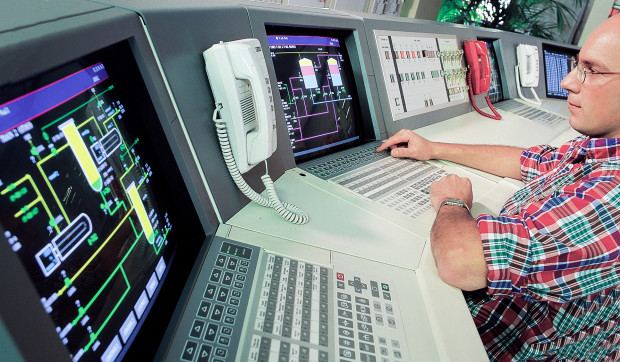 By Frank Horden, Yokogawa
By Frank Horden, Yokogawa
All for One and One for All
The last decade has seen an increase in demand for oil and gas as emerging economies begin to move into a tertiary phase of the demographic transition model. Accelerating industrialisation and rapid population growth has pushed forward the exploration, production, processing and distribution of oil and gas. This rapid expansion has placed increasing technological pressure on the control systems that manage this process. Here Frank Horden, global business development and marketing manager at Yokogawa, explores the use of OPC – Unified Architecture (OPC-UA) in control systems for oil and gas applications.
The oil and gas industry has entered the next phase of its development. Continued depletion of natural reserves is forcing exploration deeper and further afield. This comes at a time of immense economic activity in regions such as Asia and Africa. Continued improvements in transport and industry will boost motorisation of these regions. The world population between 2010 and 2025 is expected to grow by more than 1.1bn people. As a result, gas consumption will continue to rise faster than oil and regions like Europe will begin to see the challenges posed by the rising costs of an ageing technological infrastructure.
As demand for oil and gas has grown, so have the exploration efforts. Oil fields now cover vast geographic areas and use a multitude of wired and wireless communication channels to manage the process from a centralised location. This transition from local to distributed management has pushed the supervisory control and data acquisition (SCADA) systems to adapt. SCADA can now manage multisite locations, giving business leaders the ability to respond to real-time information.

Oil & Gas Applications
Yokogawa’s main sector of expertise lies in the process control of continuous process environments. These environments are usually PID (proportional, integral and derivative) intensive and are required by our customers to run 24/7 with minimal downtime. There is now also an increasing demand to integrate this product performance with the business management and decision making function.
Within the oil and gas industry, Yokogawa works in various applications including: offshore, wellhead and pipeline management. Typically, offshore enterprise automation solutions (EAS) can consist of anywhere between five and fifty platforms with several operator desks. Each offshore operation can generate between 100k to 500k data points. This information is processed remotely by the SCADA control software and connection methods can include satellite, fibre, radio and microwave channels. The backend of the system includes a centralised SCADA and HMI server, with external, firewall protected connections going to customers and to backup locations.
Similarly, wellhead applications can include 50 to 1,000 wells. The data points here can rise astronomically, especially due to the increased use of smart devices from various vendors over the last five years. This means that systems can run anywhere between 10k and 1m data points. Connection methods are equally varied, with the addition of low bandwidth radio and data backups being made via satellite.
It is evident that modern oil and gas production is a demanding process that has come a long way in the last decade. The challenge is to provide a fast-response, yet reliable, control system that has a 24/7 availability, minimal maintenance and high security.
Traditional Solutions
One of the most important aspects of control system operation, especially when managing distributed functions, is the ability of the system to act holistically, akin to a living organism. Traditionally, this has been achieved using standardised communication protocols such as OPC-DA (data acquisition) and OPC-A&E (alarm and events) which have built on previous COM and DCOM technology. This has proved to be a very viable solution to connect multi-vendor systems. Developed by Microsoft, distributed component object model (DCOM) is a proprietary technology for communication amongst software components distributed across networked computers.
Originally called Network OLE, DCOM builds on the previous COM standard and provides the communication platform under Microsoft’s COM+ application server infrastructure. DCOM is good at distributing network traffic efficiently and uses remote procedure call (RPC) well. It also uses low system memory by not having to continuously rewrite and recompile application requests.
However, systems and architectures have moved on since the development of DCOM. To stay abreast of industry changes, including compliance, Yokogawa is a participating member of the OPC foundation. The rise of the web has brought with it a host of standards such as HTTP and TCP/IP. Portable devices running different mobile operating systems are now the norm. Security vulnerabilities are being increasingly exploited and maintaining this sheer variety is becoming ever more expensive.
DCOM, OPC-DA and OPC-A&E are unable to handle this complexity. It is for this reason that a completely new architecture has been introduced in the form of OPC-UA.
Unified Architecture
The Object Linking and Embedding for Process Control (OPC) foundation is an industry consortium, which seeks to replace numerous legacy standards such as OLE, COM and DCOM with completely new standards designed for modern applications.
In 2008, the foundation launched OPC Unified Architecture (OPC-UA). A platform-independent service-oriented architecture, OPC-UA takes a multilayered approach to ensure that specification goals are met. These include functional equivalence to OPC classic, platform independence, security, extensibility and comprehensive information modelling.
The result of all this is that modern oil and gas applications can benefit from improved standardisation, a better return on investment, lowered costs, improved availability, heightened security, and ease of system maintainability.
Classic OPC connections could only be made through Windows. Standardisation is achieved through platform independence. OPC-UA can be used cross-platform, so whether it’s Windows, Linux, Android, iOS or even future platforms, developers and engineers can continue to interact with the system in a manner of their choosing.
By enabling such a variety of platforms, costs for software licensing, staff training, hardware upgrades and system migration are reduced. Furthermore, because OPC-UA can be used on legacy programmable logic controllers (PLCs) and remote terminal units (RTUs), customers can recoup a higher return on investment.
To maintain continuous production 24/7, high system availability is essential. Yokogawa’s SCADA servers are triple redundant, with quad and virtualisation also available. To this end, OPC-UA offers a reliable multi-thread crossover, detecting any problems quickly.
One of the most controversial issues in the oil and gas industry, in recent years, has been the nature of security in such a hazardous environment. This debate was recently exacerbated with the end of life support for Windows XP. Having reached its planned obsolescence, Microsoft will no longer provide security patches for this widely used operating system (OS). As a result, SCADA systems that rely on Windows software for human machine interfaces (HMIs), database or server management, may become exposed to attacks.
OPC-UA secures this communication layer by closing all ports, operating normally through firewalls and VPNs as well as working seamlessly across different workgroups and domains. The introduction of the OPC-UA embedded security certificate will also provide peace of mind to practitioners within the industry.
The coalescing of SCADA with enterprise management (ERP) and management information systems (MIS), means that business leaders can use OPC-UA for better big data. Performing trend analysis and diagnostics remotely, from a centralised location, means that business decisions are more informed and ultimately more effective.
So, as the oil and gas industry continues to face challenges from all angles, one thing is certain, the technology underpinning modern control systems will allow them to adapt to our increasingly humanised interaction with technology, driving these standards forward. To put this into context, OPC-UA is to system standardisation, what Google Glass and Oculus Rift are, to consumer technology. There is no doubt therefore, that it truly is all for one and one for all.
Download the press release here.